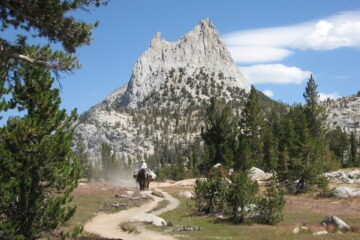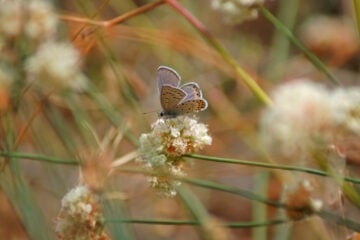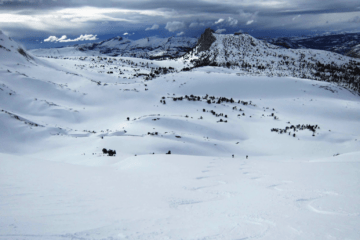Photo credit: Britain Andrew
So you’re a Forest Bather.
You love to lounge in the forest air, seek out serene sitting spots, find empty hot springs, and go for a little dip in the river on a warm day. While you’re out on your peaceful and rejuvenating adventure, take these tips with you to protect your wild wherever you are.
- Hammock responsibly
If you’re setting up a hammock for a little forest nap, make sure to be a responsible Forest Bather and follow local regulations on hammocking. For example, in Yosemite, hammocking is only allowed in designated campgrounds or in the backcountry, so long as your hammock does not create a hazard and padding is set up for the trees. Using tree straps for your hammock creates a stable hang for you while also protecting the tree trunk from damage that typical ropes, cloth, or wire would cause. When choosing your trees, make sure to choose trees that are mature and stable so that no trees will be harmed during your hammock sesh. - Pack out your trash
Leave No Trace principles protect local wildlife! While some squirrels may pester you for your crumbs, we’re pretty sure that granola bars aren’t a typical part of their diet in the wild.
Whenever you head out on the trail to admire the views, make sure to pack out all your trash with you — even things that are compostable like orange peels and apple cores. While these foods will decompose in the earth one day, they often leave behind seeds that don’t typically belong in that ecosystem, or will be eaten by local wildlife. Keeping your trash with you is one of the most key ways to keep your ecosystem wild and to protect the fauna around you.
If you come across trash on the trail, whether it’s yours or not, consider packing it home with you to leave your ecosystem better than how you found it. Your local wildlife and friends on the trail will thank you for it! - Learn about your local ecosystem and plant native plants
Take some time on your adventure to learn about the native plants, bugs, and animals around you. The more you know about what’s around you, the more you’ll have to talk about on the trail, and the more likely you and your loved ones will want to keep protecting the wild around you.
One of the biggest ways to support your local ecosystem is to plant native plants in your yard! Not only are native flowers and plants good for the native pollinators in your area, they’re often easy to grow. Because they evolved in your region, they are sure to be adapted to your weather and soil environments, giving you a leg up on getting your spring bloom going. When buying seeds and starts, make sure to read up on the exact region that plant is native to and start planting! - Use reef-safe sunscreen
If your Forest Bather adventure includes swimming, especially in the ocean, we recommend using reef-safe sunscreen before you dive in. Most traditional sunscreens are proven to have multiple chemicals in them that harm coral reefs in the ocean, so buy buying and using reef-safe sunscreen brands, you’ll be ensuring the fish you admire when you snorkel get to stay living in a healthy coral ecosystem. - Learn about Sequoias
As a Forest Bather, we know you love bathing yourself in forest facts as much as you love meditating in them. In Yosemite and all across the Sierra Nevada mountain range, Sequoias provide the backbone for a beautiful forest ecosystem. Many Sequoia trees have struggled in recent years due to climate change, drought, bark beetles, and wildfires. Read up on the role that Sequoias place in the Sierra ecosystem and the work we’re doing to protect and preserve the forest they create.
On your next adventure to Yosemite, join us for one of our art classes, naturalist walks, or Outdoor Adventures in the park! Most of our art classes and Outdoor Adventures include your peak hours/day-use reservation for entry to the park during 2024 peak season. Book your experience now before spots fill up!



